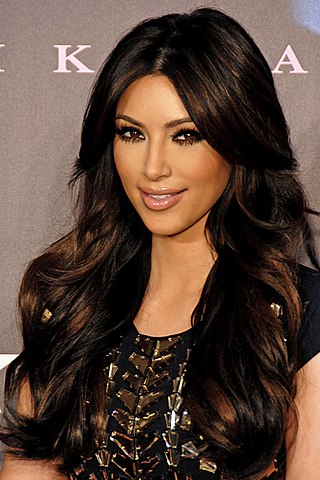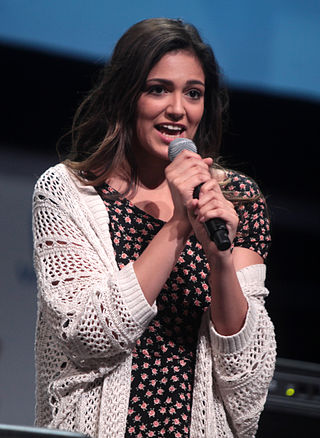Landschlacht, Switzerland, 25 August 2016
As I read the headlines of recent newspapers I can´t help but feel a sense of sadness about how much discussion can be generated over themes of relative unimportance while other themes that should be talked about are often marginalized and ignored.
More headlines are devoted to athletes and Hollywood stars then are devoted to destruction and disease.
Most of us are more aware of Kim Kardashian´s measurements than we are of how serious a problem global warming is, more concerned about fashion than famine, more afraid of phantom menaces than actual threats.

As my wife is quick to remind me, your humble blogger is quite possibly the most unfashionable person she knows, but I know if I wait long enough fashion will catch up to me!
I think I am a typically, old-fashioned kind of a man when I say I can´t understand the fuss and hullabaloo that is made over fashion.
If my clothes match the weather, fit the function I need them to do, are somewhat clean and are not offensive to the eye of the beholder, then I am satisfied.
My wife is right when she suggests I may have too many books that threaten to eat up what little space our apartment possesses, but I can counter her arguments by taking a quick stroll to her side of the bathroom or taking a quick peek inside her wardrobe.
How many bottles and tubes of toiletries and make-up does a woman actually need?
How many shoes are “enough”?
Has she even worn all the clothes she owns?
In fairness, we strange humans judge one another, especially the female of the species, by appearance, even going so far as to falsely believe that appearance is an accurate gauge of character, that a beauty can never be a beast.
We pin our perceptions of self based upon how others judge our appearance and feel flattered and complimented when someone approves of our looks.
We spend fortunes on pharmaceuticals and some even go so far as to have surgery to maintain an image of unreal perfection and ageless youth.
We foolishly separate the ideas of intelligence from beauty, stupidly thinking that beauty and intelligence cannot co-exist within the same bodily frame and many of us believe that being beautiful is superior to being intelligent.
Why do we give so much respect and attention to fashion models and ignore the truly intellectual individuals among us?
We believe that age is incompatible with beauty, so many a woman tilts against the windmills of immovable inevitability by buying into the notion that science in a bottle can stave off the signs of aging.
Many believe that the body itself is insufficient and incomplete, so folks add cosmetics, jewellery of one form or another, and even body art.
So much time, so much energy, so much interest, so much money revolves around fashion and appearance.
The world might end tomorrow, but, damn it, we will look good when the final chimes strike.
Take the case of Bethany Mota.

“Since launching her YouTube channel from the humble clutter of her north California bedroom, Mota has gone on to amass a following of nearly 10 million viewers and earns an estimated $40,000 a month for her videos.
Only 20 years old, Mota has won awards for her tips on recipes for packed lunches, back to school and morning routine tips, make-up and fashion tutorials.
This internet personality has through her videos built up her own media and fashion empire with her own clothing line with Aéroporta, JCPenney and Forever 21.
Testimony to the ever-rising reach of social media influencers, Mota was deemed so influential that she was selected to interview President Barack Obama as part of an initiative to branch out to a wider audience.
Mona’s YouTube channel reaches automatically larger audiences than most politicians’ social media accounts.” (Independent, 7 April 2016)
Think about this for a moment…
A 20-year-old whose “expertise” lies in what lip shade goes with what dress is more influential than a politician whose decisions have impact on a country’s economy and ultimately its future.
A 20-year-old makes more money per month than the President of the United States makes per year.
It’s a mad, mad, mad, mad, mad world.
No matter how one might belittle the world of fashion, there is no denying its impact and influence upon so many of us.
Fashion makes a statement.
With half the population on the planet obsessed with appearance, there is great potential for profit to be made from this obsession.
“Global brands are waking up to the massive opportunities of the worldwide Muslim market – a burgeoning sector that is young, highly educated and collectively has enormous spending power.

The world´s 1.6 billion Muslims constitute a laregly untapped commercial market, worth $2.1 trillion annually worldwide and increasing by $500 billion every year.
“A huge opportunity is being missed by corporate brands, but the market is being taken by storm by young Muslim start-ups,” said Shelina Janmohamed, vice president of Ogilvy Noor, an Islamic branding agency.

There are recent indications that global brands are beginning to target Muslims.
A decision by Marks & Spencer to sell a range of “burkinis” (full cover swimsuits) in the UK last month prompted heated debate.

H & M, one of the world´s biggest fashion chains, attracted attention with an ad featuring a model in a hijab last year.

But there is still a long way to go.
“One of the complaints we hear is that Muslim consumers feel they are not engaged with, as businesses do not reach out to them.” (Shelina Janmohamed)
Janmohamed´s company´s research has found that more than 90% of Muslim consumers said their faith had some influence on their purchases.
Muslims want food, beverages and personal products to be sharia-compliant, but show more flexibility in products and services, such as finance, insurance and travel.
Although most Muslim consumers want acknowledgement and engagement from global businesses, some worry that corporations are motivated more by the chance to profit from the Muslim market.
According to Janmohamed, Muslim consumers fall broadly into two groups: futurists and traditionalists.
Futurists combine faith and modernity.
“They are proud to express their Muslim identity, but are also brand-conscious and brand-loyal.
They are open to the world, very tech-savvy, and very engaged in social media.”(Shelina Janmohamed)
Futurists, or Generation M, are younger and have influence disproportionate to their numbers.
Navid Akhtar, CEO of the Islamic TV production company Alchemiya calls Janmohamed´s futurists “gummies”(global urban Muslims).

Gummies are hyperdiverse, spiritual rather than Religious with a capital R, educated, transnational, with high disposable incomes and the vast majority are English speakers.
A key subset of gummies are “mipsters” (Muslim hipsters), aged between 16 and 24, obsessed with identity, image, fashion, friendship and education.
Tabish Hasan, CEO of the US-based Muslim Aid Network, compares the failure of major brands to tap into the Muslim market now to a similar disregard of the potential of the Hispanic market in the 1980s.

“Brands can´t afford not to engage with the Muslim market.
The Muslim lifestyle market is moving in the same direction – it´s so big, it has so much spending power.
It´s just a matter of time.”(Tabish Hasan)(Guardian, 8 April 2016)
“France has begun arresting Muslim women for wearing full body swimwear.

What started as a temporary rule brought in by a single resort in France has spread along the French Riviera and beyond and has become a lightning rod for a multitude of divisive issues.
The first city to announce the prohibition was Cannes, where mayor David Lisnard said he wanted to prohibit “beachwear ostentatiously showing a religious affiliation while France and places of religious significance are the target of terror attacks” to avoid “trouble to public order”.
A Cannes bylaw says anyone wearing swimwear deemed not to “respect good customs and secularism” would be barred from visiting the resort´s beaches or swimming.
The second community to announce a burkini ban, Villeneuve-Loubet, was not so direct linking burkinis to terrorism.
V-L´s rule stipulates that only clothing that “is respectful to morality and secular principles, and in compliance with hygiene and safety rules” is allowed.
V-L mayor Lionnel Luca could not give what specific hygiene reasons there were for banning full body swimwear.
A tribunal in Nice ruled that a burkini ban is “necessary, appropriate and proportionate” to prevent public disorder.
Armed police forced a Muslim woman to remove her clothing on the city´s Promenade des Anglais, the location of the lorry attack on 14 July 2016 (Bastille Day) in which 84 people were killed.
Four police officers armed with handguns, batons and pepper spray stood around the woman who was lying on the beach wearing a blue headscarf and matching top and forced her to remove them despite her and her daughter´s crying.
(Think about this for a moment…
Men with guns forcing a woman to undress, with the weight of the law behind them.)
None of the French Riviera orders have directly mentioned burkinis and some people have questioned whether police would enforce the ban for wetsuits, nuns´ habits and other garments.
Dozens of Muslim women have been fined, given warnings, or arrested for wearing clothing deemed to violate these bans.
Authorities in at least 15 towns and cities have brought in bans, with the most recent being Cagnes sur Mer in Provence.
News of burkini bans has spread around the world, gaining support from right wing politicians.
Marine Le Pen, leader of the far right Front National, claimed the “soul of France is in question”.

“France does not lock away a woman´s body.

France does not hide half its population under the fallacious and hateful pretext that the other half fears it will be tempted.”(Marine Le Pen)
Critics have compared the enforcement of the ban to repression in Saudi Arabia and Iran, arguing that ordering women what to wear (or not to wear) is a violation of human rights in any context.
The bans are widely perceived to be a response to increased tensions and public fears following the Nice attack and the murder of a Catholic priest by ISIS supporters.
Some rights groups have said the new laws amount to the “collective punishment” of Muslims following the terror attacks and amid friction over immigration and the refugee crisis.
And other incidents continue…
Women are being ordered out of the sea, with onlookers shouting racist abuse.
Don´t misunderstand me…
I am very sympathetic to the victims of terrorism and I understand how sad and angry and afraid events of this type make people feel.
But we must not give in to these emotions nor let these emotions be a justification for acting as injustly as those we condemn.
We must not judge entire groups by the actions of a few.
We cannot prevent expression of religion and claim that this prevention is a secular act.
We cannot use the law against someone´s religious beliefs and then claim that we are ensuring that the law is separate from faith.
Nor need we fear that our beliefs are being supplanted by those who have chosen to bring their beliefs among us.
For if our beliefs are strong then they cannot be threatened by change.
And if our beliefs aren´t strong, then maybe change is necessary.
Terror analysts have warned that the dispute will fuel jihadist propaganda as groups like ISIS attempt to portray France and other Western countries as at war with Islam.
“If the aim of the terrorists who took so many innocent lives in Paris, Nice and elsewhere was to foment hatred and conflict and to provoke the French state into an overreaction, then the French authorities have more than fulfilled their unsavoury ambitions.
Victimising and bullying Muslim women on holiday is not only bad PR, it is wrong in principle and entirely counterproductive.”(Independent editorial)
Germany is separately considering a nationwide ban on full face veils, which is already enforced in Belgium. (Independent, 25 August 2016)
In regards to face covering, I only consider it necessary when there are security issues where a person would be required to remove a motorcycle helmet, such as places like banks or border crossings.
As for swimwear I lean towards a “live and let live” philosophy.
If a woman is comfortable with being fully covered or uncovered then personal liberty and dignity should be paramount over whether I like seeing that woman in a burkini or a bikini.
And if I am uncomfortable with my environment then I have the choice of leaving it.
Fashion is a statement.
How we choose to respond to it is a question of not only the wearer´s character, but as well our own.
